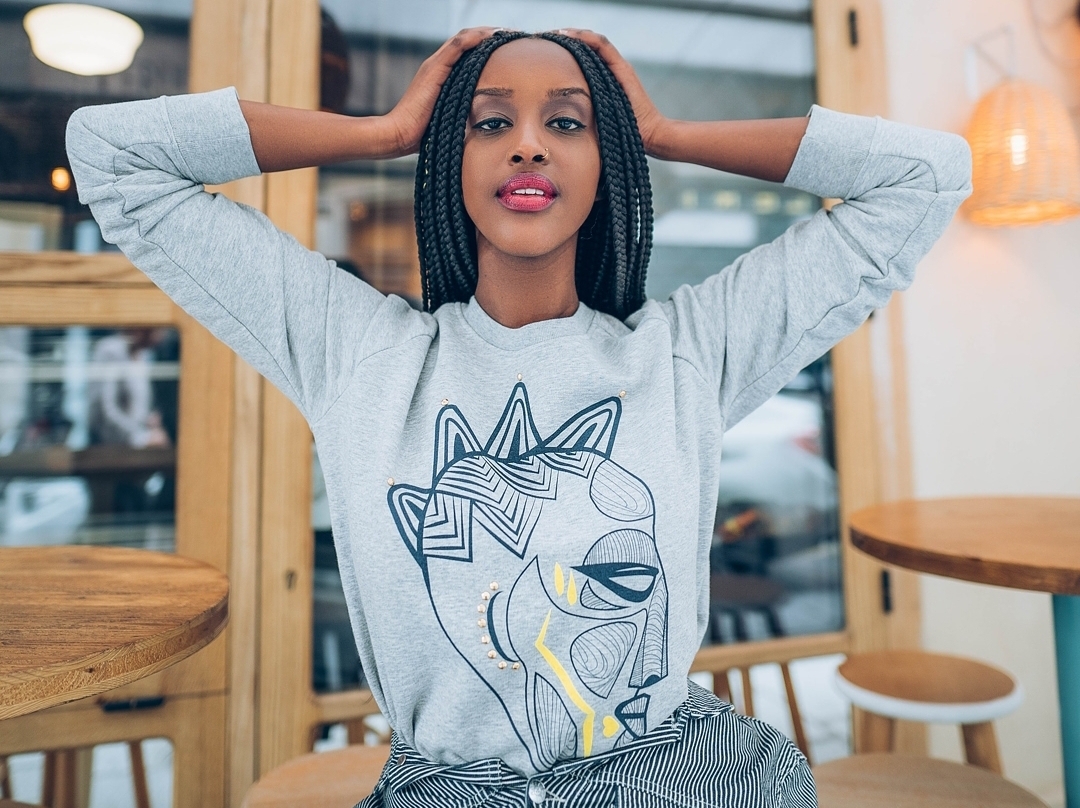Choosing Branded Clothing That Balances Durability and Elegance
Choosing Branded Clothing That Balances Durability and Elegance
Blog Article
Understanding Clothing: The Importance of Textile Options in Your Wardrobe
The choice of material in clothes plays a critical function in both looks and capability. Different products supply varying degrees of durability, breathability, and convenience, straight affecting the user's experience. Understanding these subtleties can improve one's wardrobe substantially. Yet, many ignore just how these choices can affect not simply individual style, yet also sustainability. What fabric decisions could redefine your closet and straighten it with both style and duty?
The Duty of Fabric in vogue and Performance

Common Material Types and Their Features
When selecting clothes, understanding the attributes of usual textile types is vital for making educated selections. Cotton, a widely-used all-natural fiber, is recognized for its flexibility, breathability, and softness, making it appropriate for sportswear and everyday garments. Linen, an additional natural option, boasts superb moisture-wicking properties and a distinctive appearance, perfect for cozy climates.Wool, often favored for its warmth and toughness, differs in fineness; merino woollen is soft against the skin, while coarser kinds are used for outerwear. Artificial textiles like polyester and nylon supply longevity and resistance to creases, making them prominent for activewear and travel garments. Blends, which integrate all-natural and artificial fibers, can enhance performance while maintaining comfort. By acknowledging these fabric qualities, individuals can select clothing that lines up with their lifestyle and visual preferences.
Breathability and Comfort: Choosing the Right Fabrics for Different Environments
Choosing the right textiles for various environments can greatly boost comfort and total wearability. Breathable materials are crucial in hot environments, as they permit air blood circulation and moisture dissipation. Fabrics such as cotton, bed linen, and moisture-wicking synthetics effectively draw sweat away from the body, maintaining the wearer cool and dry. On the other hand, in colder climates, thicker materials like wool or fleece give insulation while keeping breathability, guaranteeing heat without overheating.Additionally, the selection of fabric weight plays a vital function; light-weight materials are better for summertime, whereas much heavier options are fit for winter wear. Comprehending the special residential or commercial properties of each textile enables people to clothe appropriately for differing weather. Eventually, choosing breathable and comfy textiles tailored to specific environments can considerably enhance daily convenience and enhance the general experience of putting on apparel.
Toughness and Care: Exactly How Textile Affects Durability of Your Wardrobe
Selecting the ideal products can significantly affect the resilience and treatment requirements of a wardrobe. Fabrics such as cotton and polyester are known for their durability and ease of upkeep, making them ideal for everyday wear. In contrast, fragile products like silk and lace need more mindful handling and specialized cleansing approaches, which can enhance the moment and initiative needed for care. Branded Clothing.Durability is additionally affected by the textile's weave and surface; tightly woven fabrics have a tendency to stand up to deterioration better than freely woven options. Furthermore, synthetic blends frequently supply improved longevity, incorporating the finest high qualities of multiple fibers.Understanding the care guidelines for each and every textile is crucial, as inappropriate drying or cleaning can bring about premature wear. Ultimately, choosing sturdy materials can lead to a longer-lasting closet, lowering the regularity of substitutes and adding to a more lasting style selection
The Effect of Fabric on Fit and Shape

Sustainable Textile Options: Making Eco-Friendly Decisions
The effect of fabric prolongs past fit and silhouette to include ecological variables, motivating an expanding passion in lasting fabric selections. Eco-friendly textiles, such as natural cotton, hemp, and Tencel, are acquiring traction amongst consumers that focus on sustainability in their closets. These materials are frequently generated with fewer chemicals and water, decreasing their ecological footprint.Additionally, recycled materials, made from post-consumer waste, supply an ingenious option to the textile industry's pollution trouble. Brands progressively welcome openness in their sourcing approaches, permitting consumers to make educated choices about their purchases.Choosing sustainable materials not only sustains ethical practices but additionally motivates the garment industry to embrace more accountable manufacturing methods. As recognition of environmental issues rises, people are advised to assess the long-term impact of their textile selections, cultivating a movement towards a more sustainable and environmentally aware technique to fashion.
Raising Style: Exactly How Textile Can Transform an Outfit
While several may concentrate on color and cut when picking a clothing, the option of material plays a vital duty in elevating style and improving general appearance. Various materials share distinct state of minds and messages; for example, silk shows luxury and elegance, while jeans supplies an informal, unwinded ambiance. The texture and drape of a textile can drastically change the silhouette, with structured materials supplying a refined look and softer ones creating a much more fluid, unwinded aesthetic.Moreover, the weight of the textile affects wearability throughout periods. Light-weight materials like bed linen and cotton are ideal for summer, while much heavier materials such as woollen and velvet supply heat and elegance in colder months. Comprehending fabric residential properties, such as breathability and stretch, also encourages individuals to make informed selections that improve comfort without compromising design. Ultimately, the ideal textile can change a clothing from ordinary to extraordinary, making it an important consideration in any type of closet.
Regularly Asked Concerns
Just how Do I Identify the Material Content of My Apparel?
To determine material material, one can take a look at treatment labels, conduct burn tests for fiber recognition, or get in touch with fabric examples. These methods help distinguish products, guaranteeing educated selections for garments treatment and upkeep in day-to-day wear.
Can Material Option Affect My State Of Mind or Self-confidence?
Textile selection can substantially affect an individual's mood and self-confidence. Branded Clothing. Certain materials might stimulate sensations of convenience or style, while others can feel uncomplimentary or restrictive, eventually affecting self-perception and psychological wellness throughout the day
What Fabrics Are Finest for Sensitive Skin?
For individuals with sensitive skin, all-natural fabrics like bamboo, bed linen, and cotton are typically advised. read this post here These materials are breathable, hypoallergenic, and much less likely to create inflammation, making them appropriate choices for convenience and skin health and wellness.
Exactly how Do I Properly Wash and Care for Various Fabrics?
To properly clean and care for various fabrics, one must think about each material's particular requirements, consisting of temperature setups, cleaning agents, and drying approaches, ensuring durability and keeping the textile's original qualities for optimal usage.
Exist Details Fabrics for Athletic or Efficiency Use?
Sports or efficiency wear often makes use of textiles such as spandex, polyester, and nylon. These materials are created for moisture-wicking, breathability, and adaptability, boosting motion and convenience during exercises while providing sturdiness and support. On the other hand, in cooler environments, thicker textiles like wool or fleece give check this site out insulation while retaining breathability, guaranteeing warmth without overheating.Additionally, the choice of fabric weight plays a crucial role; lightweight fabrics are more effective for summer season, whereas much heavier options are matched for wintertime wear. In comparison, fragile materials like silk and shoelace require more careful handling and specialized cleansing approaches, which can raise the time and initiative required for care.Durability is likewise affected by the fabric's weave and finish; securely woven fabrics have a tendency to resist wear and tear far better than loosely woven options. In comparison, stiff textiles can limit motion however offer a timeless, polished look.Moreover, the density and appearance of the material can influence the visual understanding of body shape. The influence of textile prolongs past fit and shape to encompass ecological variables, motivating a growing rate of interest in lasting fabric selections. The appearance and drape of a fabric can drastically alter the shape, with organized fabrics supplying a refined appearance and softer ones creating an extra fluid, relaxed aesthetic.Moreover, the weight of the textile affects wearability throughout periods.
Report this page